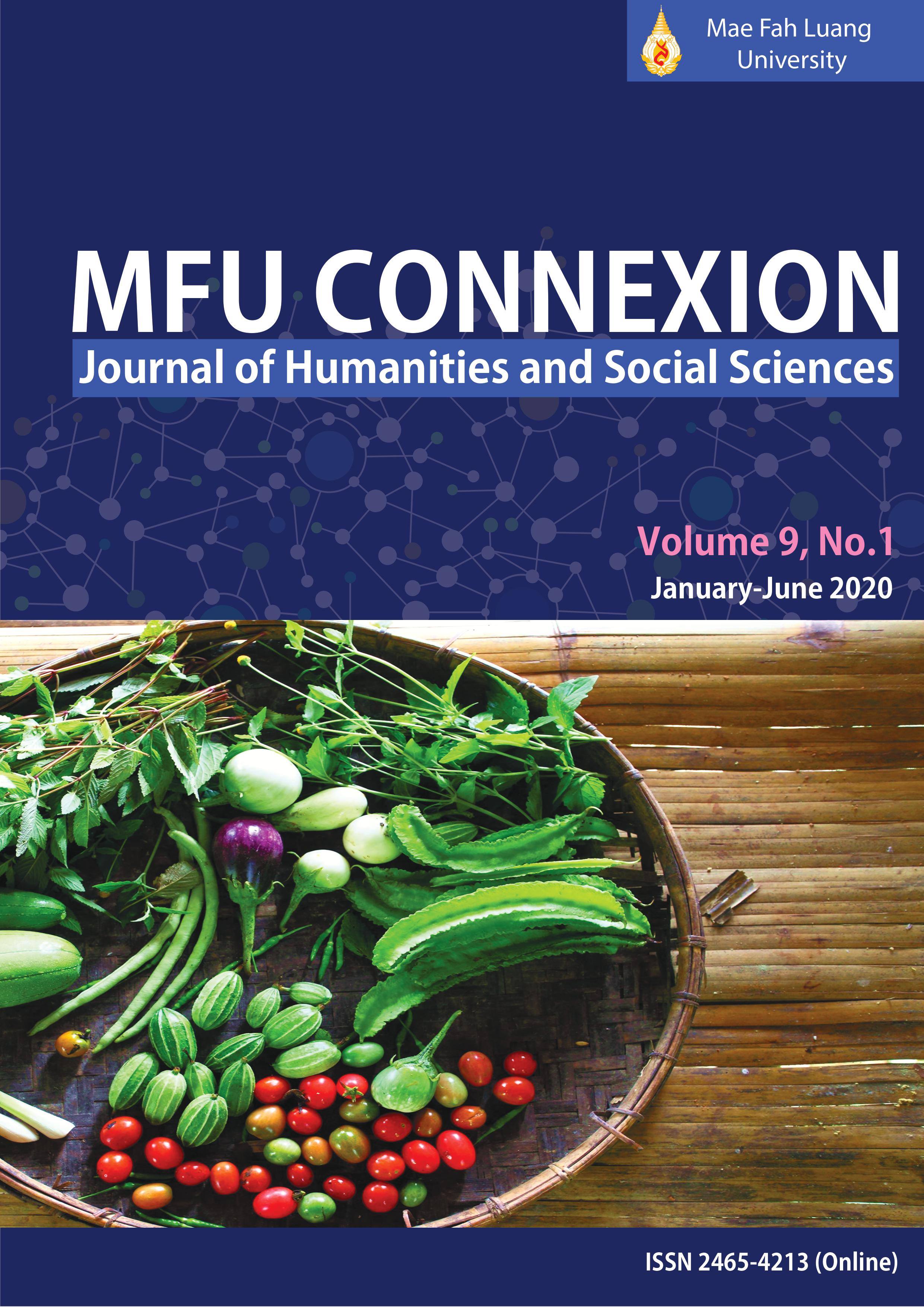The Revival of Thai Lue Ethnic Group Performing Arts: Case Study of Thai Lue Singing Chiangkham District Phayao Province and Ban Nayangtai Lao People's Democratic Republic
Main Article Content
Abstract
The Revival of Thai Lue Performing Arts: Case Study of Thai Lue Singing. The Development of Research Project Management: Case Study of Cultural Relations between Thai Lue Ethic Group in Phayao and Thai Lue in Luang Prabang Distrcit, Laos. The purposes of the study are (1) to study the adjustment of Thai Lue ethnic group performing arts: a case study of Thai Lue singing, (2) to study basic elements of Thai Lue singing by individual purposive interview, and group interview. The sample of this study were singers, pipe players and leaders or patrons in group of performing arts. The data collected from observation and interview performer and patron.
The study found that the adjustment of Thai Lue ethnic group performing arts at Chiang Kham District was the performing art renewability. Then the group of people who studied Thai Lue singing extended the learning outcomes based on their individual ways by studying from teachers in Laos, Myanmar and Xishuangbanna and learning through online which them could apply for dancing performances in events in community and provinces as well as broaden teaching methodology to students and juveniles.
In Thai Lue singing at Yang Na Tai Village, it found that Thai Lue singing was acquired from family who worked as Thai Lue singers that performed in auspicious ceremonies. The instruments were fans and Thai Lue pipes. However, it differentiates from Chiang Kham District by using two pipes called Pi Kiew. Nevertheless, the platform of Thai Lue at Chiang Kham is that the pipe players will be on the left hand of the singer, but two singers at Na Yang Tai Village will be on the front area of the singers. Moreover, both of the players of two areas will pay respect to teachers or homage to teachers before the performance. The benefits of studying in both countries are preliminary data that can be used to develop Tai Lue Singning styles, creating Tai Lue Singning innovation, including develop activities of the elderly in the community.
Article Details
Copyright
Connexion: Journal of Humanities and Social Sciences has an exclusive right to publish the accepted articles in any form. However, the author retains the following rights:
1. The right to the ownership of the article;
2. The right to use all or part of the article in his/her other works;
3. The right to re-produce the article for personal use or for use in the author’s organisation, in which case the author must obtain permission from Connexion: Journal of Humanities and Social Sciences;
4. The right to make copies of all or part of the work for educational use or for the author’s use in classroom teaching; and
5. The right to include the work (both the preprinted and printed versions) in an institutional repository.
References
Aongsakul, S. (1999) Encyclopedia of Thai culture (Northern) Book 12 Cultural Encyclopedia Foundation (สารานุกรมวัฒนธรรมไทย ภาคเหนือ เล่ม 12 มูลนิธิสารานุกรมวัฒนธรรมไทย ธนาคารไทยพาณิชย์ จัดพิมพ์เนื่องในพระราชพิธีมงคลเฉลิมพระเกียรติพระชนมพรรษา 6 รอบ 5 ธันวาคม 2542), Bangkok: The Siam Commercial Bank, Limited. (in Thai)
Apakorn, R., et al. (2000) Thai Lue (ไทลื้อ), Bangkok: Ministry of Culture, Chiang Mai Bangkok. (in Thai)
Foosri, W. (n.d.) The book of social sciences, religion and culture, the history of Thai Lue singing (หนังสืออ่านประกอบกลุ่มสาระการเรียนรู้สังคมศึกษา ศาสนาและวัฒนธรรมประวัติความเป็นมาของการขับลื้อ), Phayao: Anuban Chiangkham School (Wat Prathat Sobwan) Primary Educational Service Area 2. (in Thai)
Inthaniwet, A. (2014) The study of collecting in cultural knowledge in “Khab Lue” (การศึกษารวบรวมองค์ความรู้ทางวัฒนธรรม เรื่อง “ขับลื้อ”), Bangkok: Ministry of Culture. (in Thai)
Kongmongkon, N. (2006) Khab Lue: A case study of Chiang Kham district and Chiang Muan district, Phayao province (ขับลื้อ: กรณีศึกษาอำเภอเชียงคำและอำเภอเชียงม่วน จังหวัดพะเยา), Master’s thesis, Kasetsart University. (in Thai)
Phra Nakorn Phanyawachiro (Prangrid), et al., (eds.). (2011) Thai Lue ways, Sipsongpanna (วิถีไทลื้อ เมืองสิบสองพันนา), Chiang Mai: The Project of Establishing Buddhist Center Study in Neighbors Mahachulalongkornrajavidyalaya University Chiang Mai Campus. (in Thai)
Setthaku, R. (2014) The Sibsongpanna Chronicle during World War II (ค่าวเสิกโลกธีสองแลเจ้าแผ่นดินตนชื่อเจ้าหม่อมผาคางนอรแรแลยิ่วล้อ: บันทึกประวัติศาสตร์สิบสองปันนาสมัยสงครามโลกครั้งที่ 2), Journal of Fine Arts, vol. 5, no. 1, pp. 125-158, Available: https://so02.tci-thaijo.org/index.php/fineartsJournal/article/view/77238/61991 [15 October 2019] (in Thai)
Sirasuntorn, P. (2013) Concept, theory and technique for social development practice (แนวคิด ทฤษฎี เทคนิค และการประยุกต์เพื่อพัฒนาสังคม), Bankok: Chulalongkorn University. (in Thai)
Tapang, R. (2017) Music and Thai Lue ethnic plays at Chiang Kham (ดนตรีและการละเล่นชาติพันธุ์ไทลื้ออำเภอเชียงคำ), Journal of Arts and Culture Chiang Mai Rajabhat University, vol. 2, no. 1, pp. 57-69. (in Thai)
Progressivism (ปรัชญาการศึกษาพิพัฒนาการนิยม). (n.d.) Available: https://www.baanjomyut.com/library_2/educational_philosoph/05.html?fbclid=IwAR26q8PhmwiT2daesm70y-wQ3yt_qlHbIO4lUa5RDhitzXWwlbNun0H1-vA [8 October 2019] (in Thai)


